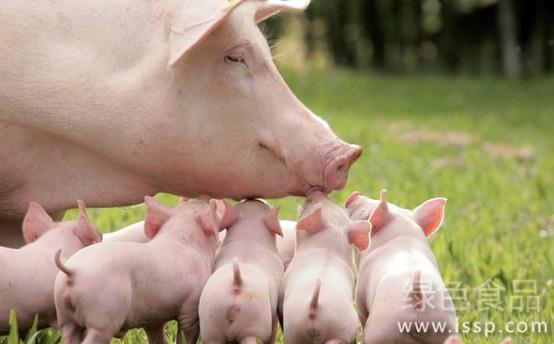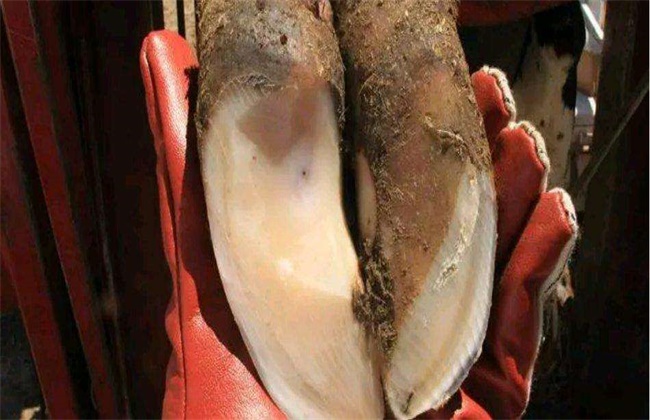hoof disease Learn more about hoof disease
-
Diagnosis and treatment of hoof deformation in farmed dairy cows

Hoof disease is a common disease in dairy cow production, which causes claudication in light and paralysis in severe. If it is not paid attention to, it will increase the production cost and reduce the economic benefit. Clinical hoof deformation refers to the change of the shape of cow hoof. Due to hoof deformation
2020-11-08 Breeding cow hoof transformation shape diagnosis and treatment method hoof disease yes -
Prevention and treatment of hoof disease in dairy cattle

Prevention and treatment of hoof disease in dairy cattle
2018-07-11 -
How does cracked hoof disease affect sow breeding how to prevent and cure sow split hoof disease

How does cracked hoof disease affect sow breeding how to prevent and cure sow split hoof disease
2018-10-28 -
Causes and prevention methods of hoof deformation in dairy cattle

Causes and prevention methods of hoof deformation in dairy cattle
2020-03-17 -
Porcine surgical disease-porcine hoof leaf inflammation

[etiology] there were few clinical cases of porcine hoof lobulitis in the past, and the incidence rate has increased in recent years. There are many factors inducing hoof leaf inflammation. At present, due to the application of various additives, pig feed formula nutrients are comprehensive and sufficient, feed is thick and palatable, pigs are gluttonous and sleepy, exercise is less, plus the increase of captivity and cage breeding, fat and fat are thickened in a short period of time, and the weight increases rapidly. In this way, the large pig body increases the pressure on the narrow hoof box, coupled with insufficient exercise, poor blood circulation of the hoof, and obstruction of the hoof machine. When digestive disorders occur, the gastrointestinal feed is fermented into histamine-like toxins, which is rich in
2019-01-16 -
How to diagnose vesicular disease in pigs

Common vesicular diseases of pigs include foot-and-mouth disease, vesicular disease, vesicular rash and vesicular stomatitis, etc., all of which are characterized by blisters on the mouth and feet. 1. Foot and mouth disease. It infects a variety of animals, mainly cloven hoofed animals, and humans can also be infected. Cattle are susceptible, followed by pigs, sheep, goats and camels, and young animals are susceptible. Infectious sources are sick animals and infected animals, and transmission vectors are respiratory tract, digestive tract and wound. There is no seasonal epidemic, but it occurs more in winter and spring.
2019-01-15 -
Etiology and treatment of bovine laminitis

Etiology and treatment of bovine laminitis
2019-08-09 -
Health Care of limbs and hooves of Dairy cows

Health Care of limbs and hooves of Dairy cows
2018-07-01 -
Causes and prevention methods of pig hoof crack

Causes and prevention methods of pig hoof crack
2018-09-07 -
Prevention and treatment of bovine hoof disease

Prevention and treatment of bovine hoof disease
2018-07-06 -
Prevention and treatment of foot rot in sheep

Prevention and treatment of foot rot in sheep
2018-09-07 -
Diagnosis and treatment of hoof rot in sheep and its control measures

Diagnosis and treatment of hoof rot in sheep and its control measures
2018-07-14 -
Control methods of sheep hoof rot disease

Control methods of sheep hoof rot disease
2018-09-07 -
How to prevent and cure the foot rot disease of dairy cows

How to prevent and cure the foot rot disease of dairy cows
2018-08-09 -
Sheep hoof rot disease

Sheep hoof rot disease
2018-07-25 -
How to trim the hooves of sheep in spring

How to trim the hooves of sheep in spring
2018-09-07 -
What are the symptoms of foot-and-mouth disease in cloven-hoofed animals? Can foot-and-mouth disease in pigs be transmitted to humans?

Foot-and-mouth disease is an acute, febrile and highly contagious disease of cloven-hoofed animals caused by foot-and-mouth disease virus. Mainly against cloven-hoofed animals, occasionally seen in people and other animals, will never infect other livestock and chickens, ducks and other poultry. Its
2020-11-11 Cloven hoofs animals foot-and-mouth disease symptoms what is it pigs will infection -
Prevention and treatment of bovine necrotic bacilli

Necrobacillosis is a chronic infectious disease caused by Clostridium necrosis. in clinic, tissue necrosis is common, such as skin, subcutaneous tissue and digestive tract mucosa, and metastatic necrosis can also be formed in the viscera. First, symptoms. The incubation period is 1-3 days. The common diseases in cattle are rotten hoof disease and diphtheria. The former is common in adult cattle. At the beginning of the disease, there are holes and holes in the bottom of the hoof, and there are necrotic and decaying inflammatory products. It is black and smelly like water, in addition, abscesses, pus leakage and surrounding skin necrosis are formed between the toes, the crown of the hoof and the heel. Inflammation can spread to synovial bursa and tendon
2019-01-15 -
Treatment of lameness in sheep

Traumatic claudication refers to sheep being stoned by stones, iron filings, glass debris, etc., or infected with germs due to cracks in the hoof crown and cuticle, resulting in purulent, unable to walk, or due to humid environment, causing hoof rot. Treatment: To trim the hoof in time, as soon as possible to pierce the hoof of foreign bodies removed. If the hoof fork has rotted suppuration, available 1%~2% potassium permanganate solution cleaning, and then coated with 10% iodine tincture. If there are holes or holes in the bottom of the hoof, fill the holes with 5% copper sulfate powder or 5% sodium salicylate powder and wrap them.
2019-01-16 -
Prevention and treatment of necrotic bacilli in cattle

Necrobacillosis is a chronic infectious disease caused by Clostridium necrosis. in clinic, tissue necrosis is common, such as skin, subcutaneous tissue and digestive tract mucosa, and metastatic necrosis can also be formed in the viscera. First, symptoms. The incubation period is 1-3 days, and the common disease type of cattle is rotten hoof.
2020-11-08 Cattle raising necrosis bacilli disease prevention and treatment are caused by
